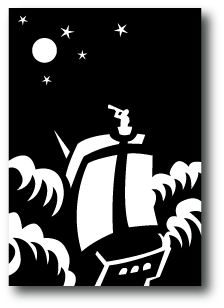
Part I. Constructivist & Integrated Studies
Learning Design
“Education is a social process; education is growth; education is not preparation for life but is life itself.” ― John Dewey
Constructivist learning is based on the theory that people actively construct knowledge, skills and values through experiences in their physical and social environments. We continually construct our own understanding as we encounter new experiences and reflect upon previous knowledge, skills and values.
Here, constructivist learning design is embodied through integrated studies to facilitate the combined practices of inquiry-based learning + project-based learning + social and emotional learning as a framework for crafting engaging learning environments.
Engaging. The wonder word many educators use to describe how teaching and learning embodies twenty first century learning environments. However, engagement just doesn't happen because a district or school have purchased the latest technology or cool furniture.
Engagement is the in the moment outcome that comes from constructivist learning activities derived from an integrated studies approach. As educators, we need to provide students with active hands-on/minds-on pedagogy as the wind to our sails so that synonyms of engagement are used to describe the learning within our educational culture, places and spaces.
Children have real understanding only of that which they invent themselves, and each time that we try to teach them something too quickly, we keep them from reinventing it themselves. ―Jean Piaget
From constructivist theories of psychology, we take a view of learning as a reconstruction rather than as a transmission of knowledge. Then we extend the idea of manipulative materials to the idea that learning is most effective when part of an activity the learner experiences as constructing a meaningful product. ―Seymour Papert
In Part I of this book, a constructivist pedagogy is presented within an integrated studies framework to create learning environments that are more reflective of our twenty-first century world.
Edutopia and Integrated Studies
In following the giants of constructivist models of learning from John Dewey, Maria Montessori, Jean Piaget, and Seymour Papert, I'm inspired and actively follow the work of the George Lucas Education Foundation and their online publication, Edutopia. I have come to advocate the term, 'Integrated Studies' defined in Edutopia- “Integrated studies involves the combination of two or more subjects in a lesson, project, classroom, or curriculum. Teachers can draw interdisciplinary connections by making relationships between different subjects explicit, and/or by working with other teachers in teams across subjects.” (Edutopia, 2018). We see this definition as a positive transitional phrase to creating something even larger; a school transformed where integrated studies are more than a lesson or unit, it is the foundational design of the entire school curriculum. The Edutopia header for integrated studies echoes the vision for such schools, “Discover the innovations and best practices for combining multiple academic subjects to prepare students for a world where all knowledge is integrated” (2018).
Integrated Studies Framework
The first three chapters lay out a process for creating and sustaining an integrated studies framework for a K-12 school or program.
Chapter 1. Building an Integrated Studies Framework: Transitions to Transformation
Chapter 2. Baking PIEs: Iterative Learning Cycles, Units and Curriculum Mapping
Chapter 3. Reaching BLIS (Blended Learning Instructional Strategies)
K-12 educators building any form of curriculum framework will experience learning iterations of exploration, mistakes and redo’s. Sustainable success, takes time. I'm talking a minimum of six years to build a framework that is sustainable past most of the original people that envisioned and started a new curricular program at a school. I developed a saying while working with many school staffs over the years, “People come and go, but their ideas found a school.” My desire here is to put forth some ideas, tips and tricks into your creative and innovative mind that helps you build your own long-term integrated studies learning environment.

No part of this publication may be reproduced, distributed or transmitted in any form or by any means, including photocopying, recording, or other electronic or mechanical methods, without the prior written permission of the publisher, except in the case of brief quotations embodied in critical reviews and certain other noncommercial uses permitted by copyright law. For permission requests, write to the publisher, addressed “Attention: Permissions Coordinator,”
at the address below.
Groupwerk Publishing
Skinner Building
1326 Fifth Avenue | Suite 438
Seattle, WA 98101